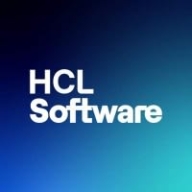


BigFix and IBM MaaS360 compete in the endpoint management and mobility management categories. BigFix has an advantage in endpoint management due to its comprehensive features and scalability, while IBM MaaS360 excels in mobile device management with a focus on security.
Features: BigFix offers comprehensive patch management, inventory, compliance, and lifecycle management, making it suitable for desktop environments with its deep system visibility and API integration. IBM MaaS360 stands out in mobile device management, with effective security features like encryption and policy enforcement, making it ideal for managing mobile devices and laptops with Apple DEP integration.
Room for Improvement: BigFix can improve its user interface by modernizing its web reporting and simplifying patch notifications. There's also potential for enhancing multi-tenant management and cloud-based operations. IBM MaaS360 should address synchronization issues and strive for feature parity with competitors like Intune, while also improving integration and user management capabilities.
Ease of Deployment and Customer Service: BigFix is mainly on-premises, offering flexibility but requiring significant setup. Its customer support benefits from strong community forums. IBM MaaS360, being cloud-centric, supports quicker deployment with minimal infrastructure and has responsive customer service, although some users face synchronization and setup challenges. BigFix excels in community support, whereas MaaS360 benefits from quicker resolution times.
Pricing and ROI: BigFix uses a tiered licensing model, proving cost-effective in virtualized environments but generally considered expensive. It offers significant ROI by reducing man-hours and streamlining compliance. IBM MaaS360 has competitive pricing, though some find it costly compared to alternatives like Intune. Both provide considerable ROI; BigFix does so through quick returns in endpoint compliance, while MaaS360 offers flexibility without vendor lock-in.
Everything we've gained from it makes my job easier day after day, and I see value in it as an engineer.
Microsoft Intune not only saves costs by reducing the number of personnel needed but also offers a comprehensive solution for managing laptops, applications, security, individual access, and enrollment.
Importantly, when someone leaves the company, it helps protect document access on their devices.
When a support ticket is submitted, it directly reaches someone with Intune support expertise.
When I contacted Microsoft, they had the same expertise, if not more, which is phenomenal because I felt heard and my problem was solved.
Sometimes, the support provided is excellent, and the representative is knowledgeable, while other times, the service needs improvement.
On a scale from one to ten, with ten being the highest quality, enterprise support provides timely responses, typically within four to eight hours.
Technical support from HCL is satisfactory unless there are customization requirements.
IBM's support and technical service were helpful when needed.
The scalability of Microsoft Intune is ten out of ten.
Ideally, we want to automatically segregate devices based on user properties like primary use, but currently, dynamic groups seem limited to device properties.
It supports organizations with 200 endpoints and those with more than 15,000 endpoints.
BigFix requires some minimum configuration requirements.
We have not experienced downtime, bugs, or glitches.
It appears Microsoft Intune undergoes changes without informing customers.
Microsoft Intune has been very stable.
Features like unlocking devices sometimes fail, and the support offered for other operating systems is insufficient.
There are communication issues, so you might start working with a feature without knowing if it will be deprecated six months from now.
Many third-party companies offer single-pane-of-glass reporting that shows you what your update environment looks like, how your patch is doing, application status, etc., but Intune's reporting is not intuitive.
Building a management console is quick and simple, taking only one to two hours for setup.
The problem was related to the hardware configuration and hardware specifications.
In addition to reporting improvements, there should be a feature for application control to allow or disallow certain applications from being executed on endpoints.
Introductory professional services, like a fast-track service, were included with our E5 membership, and there have been no additional costs.
The Intune suite and add-ons, such as batch management and remote help, are costly.
It costs approximately forty euros per user per month.
The pricing is pretty good and now follows a subscription model similar to SolarWinds, making it easier for customers to subscribe and unsubscribe.
The pricing and licensing experience with IBM MaaS360 was satisfactory and not expensive.
Intune excels in configuration and compliance management for Windows 10, ensuring devices receive timely updates and adhere to organizational standards.
Dynamic groups allow us to set conditions for automatic membership, eliminating the need for user intervention or manual review and ensuring a seamless workflow.
Windows Autopatch is the most valuable because it removes the burden of patch management.
The BigFix features that have proven most effective include inventory, software delivery, software distribution, software catalog, and both software and hardware management.
I use this mainly to capture inventory for IBM products, and as BigFix was part of IBM, it gets easily integrated with IBM solutions.
BigFix supports something known as Patch Policies, which allows users to define that whenever critical patches are released, they should get evaluated against machines and automatically deploy them.
The main benefit of IBM MaaS360 is phone control and rollout.
| Product | Market Share (%) |
|---|---|
| Microsoft Intune | 32.6% |
| BigFix | 5.0% |
| IBM MaaS360 | 6.3% |
| Other | 56.1% |



| Company Size | Count |
|---|---|
| Small Business | 116 |
| Midsize Enterprise | 46 |
| Large Enterprise | 152 |
| Company Size | Count |
|---|---|
| Small Business | 30 |
| Midsize Enterprise | 12 |
| Large Enterprise | 66 |
| Company Size | Count |
|---|---|
| Small Business | 20 |
| Midsize Enterprise | 7 |
| Large Enterprise | 12 |
Microsoft Intune provides centralized management of mobile devices and applications, ensuring security, compliance, and productivity through integration with Microsoft services like Microsoft 365 and Azure Active Directory.
Organizations use Intune for managing mobile devices and applications, enhancing security and compliance across platforms. With features like single sign-on, conditional access, and zero-touch deployment via Autopilot, it facilitates efficient operations. Intune's scalability, easy enrollment, and capabilities such as remote wipe support diverse device management, offering robust data protection and efficient operation. Despite its features, improvement areas include reporting, compatibility with non-Microsoft devices, and better support for macOS and Linux devices.
What are the key features of Microsoft Intune?
What benefits should users look for in reviews?
In industries such as finance, healthcare, and education, Microsoft Intune is implemented to ensure secure and compliant device management. Companies leverage its capabilities to deploy security policies and manage both corporate-owned and BYOD environments, facilitating a unified approach to data protection and compliance.
HCL BigFix is a powerful patch management tool that enables organizations to simply control their patch management operations. It is designed so that IT security and operations teams can collaborate in the most effective way possible. Users that employ BigFix can find and fix issues with their endpoints faster than those that employ its competitors. It comes with thousands of security checks that can be deployed quickly and easily. These enable users to safeguard themselves from a wide variety of digital threats.
HCL BigFix Benefits
Some of the ways that organizations can benefit by choosing to deploy HCL BigFix include:
BigFix Features
Reviews from Real Users
HCL BigFix is a highly effective solution that stands out when compared to most of its competitors. Two major advantages it offers are its auto-patching capability and its user-friendly tools.
Santhosh K., the chief executive officer of Catnip Infotech Private Limited, writes, “The second valuable feature is, BigFix also has an auto patch updating feature, where the latest patches, and what is required for my system are automatically downloaded and kept ready for me. The solution applies the patch and notifies me after applying the patch. BigFix also gives me a ping saying that I should reset my system within a certain period of time, while the patch is being applied. Let's say, the patch is being applied and if there's an issue, the solution can revoke the applied patch, and revert back to the old state.”
Benedikt S., an application administrator, says, “It's very straightforward. The usability is very close to everyday technical tools that you use as a systems administrator. So it's quite user-friendly.”
IBM MaaS360 is an EMM solution that allows you to configure devices for enterprise access and protect corporate data on smartphones and tablets – all from a single screen. As a robust integrated cloud platform, MaaS360 simplifies mobile device management (MDM) with visibility, rapid deployment, and control that spans across apps, mobile devices, and data. It also secures apps, laptops, smartphones, tablets, wearables, desktops, the Internet of Things (IoT) devices, and data so you can rapidly scale your remote workforce and bring your own device (BYOD) initiatives.
IBM MaaS360 can help you build a zero-trust strategy with modern device management. Deployment is so fast that in just a few clicks, IT admins can start enrolling devices and quickly manage the entire mobile device lifecycle. They can do everything from enrollment to enterprise integration, support, configuration and management, monitoring and security, analytics, and reporting.
IBM MaaS360 Features
IBM MaaS360 has many valuable key features. Some of the most useful ones include:
IBM MaaS360 Benefits
There are many benefits to implementing IBM MaaS360. Some of the biggest advantages the solution offers include:
Reviews from Real Users
MaaS360 stands out among its competitors for a number of reasons. Some of these include its mobile device and laptop management, robust security, and complete sync with Active Directory. PeerSpot users take note of the advantages of these features in their reviews:
Claudia G., a Cybersecurity Consultant at Telefónica, mentions, “My customers value the ability to control all their devices from a central point in IBM MaaS360. I rate IBM MaaS360 a nine out of ten.”
Okoro A.., a CEO at a ITANDT Solutions Limited notes, “The most valuable features are mobile device management and security (which allows you to quarantine infected devices).”
We monitor all Unified Endpoint Management (UEM) reviews to prevent fraudulent reviews and keep review quality high. We do not post reviews by company employees or direct competitors. We validate each review for authenticity via cross-reference with LinkedIn, and personal follow-up with the reviewer when necessary.